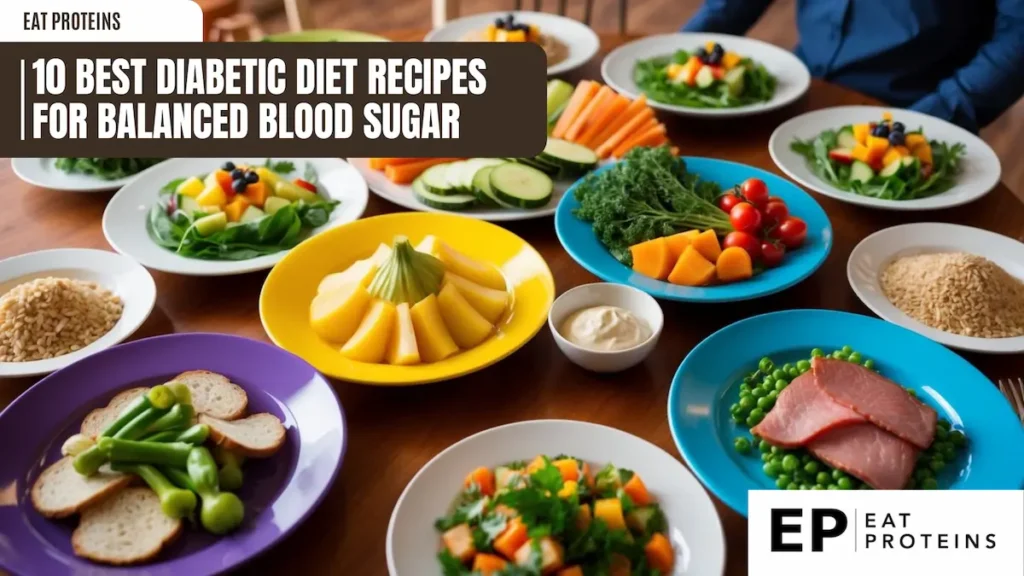
Eating well with diabetes can be both tasty and healthy. I’ve put together a list of 10 great recipes that are perfect for people with diabetes. These dishes are not only good for you, but they’re also delicious and easy to make.
My top 10 diabetic-friendly recipes are packed with nutrients and flavor while helping to control blood sugar. I’ve chosen meals that use whole grains, lean proteins, and lots of veggies. These recipes are great for anyone looking to eat healthier, not just those with diabetes.
1. Grilled Chicken Salad with Avocado

Grilled chicken salad with avocado is a tasty and nutritious option for people with diabetes. I find it easy to make and packed with protein and healthy fats.
To prepare this dish, I start by grilling 4 ounces of chicken breast for about 6-8 minutes per side. While it cools, I chop lettuce, tomatoes, and cucumber.
Next, I slice half an avocado and add it to the salad bowl. The avocado adds heart-healthy monounsaturated fats to the meal.
I slice the cooled chicken and place it on top of the veggies. For dressing, I use a tablespoon of olive oil mixed with lemon juice and herbs.
This salad takes about 20 minutes to make from start to finish. It’s a filling meal that helps keep blood sugar levels steady due to its balanced mix of protein, fiber, and healthy fats.
2. Lemon Garlic Salmon

I love this Lemon Garlic Salmon recipe for its simplicity and health benefits. It’s perfect for people with diabetes due to its low carb content and high omega-3 fatty acids.
This dish is quick and easy to make. I can prepare it in about 20 minutes, making it ideal for busy weeknights.
To start, I preheat the oven to 400°F (200°C). Then, I place a 6-ounce salmon fillet on a baking sheet lined with parchment paper.
Next, I mix 1 tablespoon of olive oil, 1 minced garlic clove, and the juice of half a lemon in a small bowl. I pour this mixture over the salmon, making sure it’s well coated.
I bake the salmon for 12-15 minutes, depending on its thickness. The fish is done when it flakes easily with a fork.
For extra flavor, I sometimes add a sprinkle of fresh dill or parsley before serving. This recipe is not only tasty but also helps manage blood sugar levels.
3. Quinoa and Black Bean Stuffed Peppers
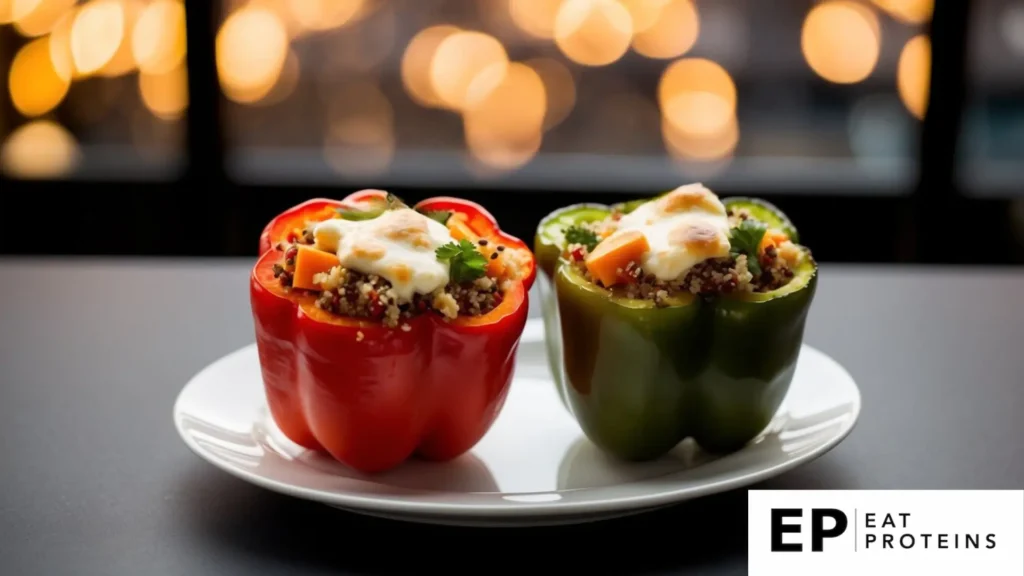
Quinoa and black bean stuffed peppers are a tasty, nutritious option for people with diabetes. This dish combines protein-rich quinoa and fiber-packed black beans with colorful bell peppers.
I find these stuffed peppers easy to make. They require about 30 minutes of prep time and 35-40 minutes of cooking.
To start, I cook 1 cup of quinoa according to package directions. While it’s cooking, I cut 4 bell peppers in half and remove the seeds.
Next, I mix the cooked quinoa with 1 can of black beans, diced tomatoes, and spices. I stuff this mixture into the pepper halves.
I bake the peppers at 375°F for about 30-35 minutes until they’re tender. For extra flavor, I sometimes top them with a sprinkle of low-fat cheese in the last 5 minutes of baking.
Quinoa provides essential nutrients and a satisfying texture to this meal. The black beans add fiber, which can help manage blood sugar levels.
This recipe makes a filling dinner that’s both diabetes-friendly and delicious. It’s a great way to include more vegetables and whole grains in my diet.
4. Zucchini Noodles with Pesto
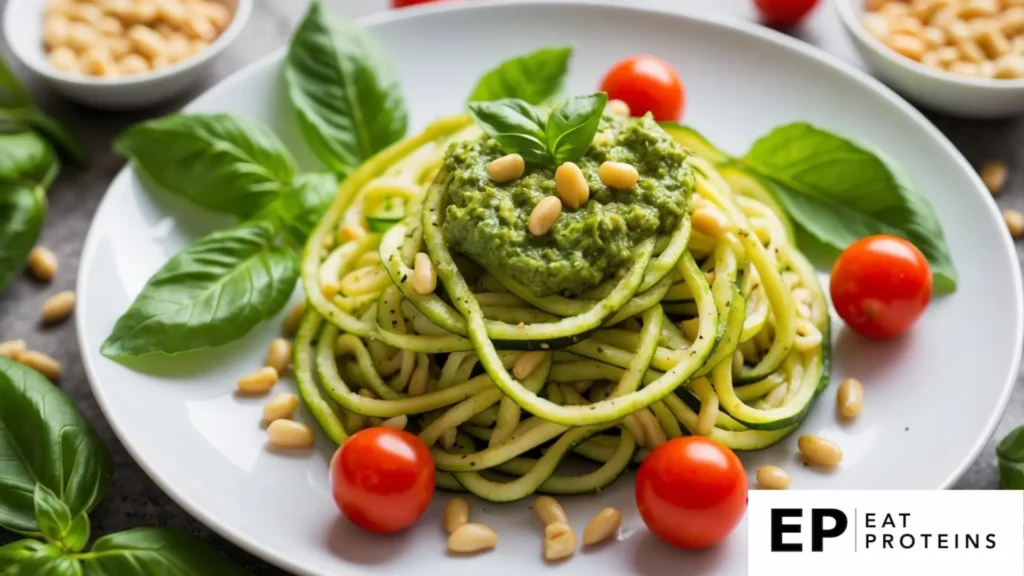
Zucchini noodles, also called “zoodles,” are a great low-carb pasta alternative for people with diabetes. I find them easy to make and delicious when paired with homemade pesto.
To make zucchini noodles, I use a spiralizer or vegetable peeler to create long, thin strands from fresh zucchini. This process takes about 5 minutes for 2 medium zucchinis.
For the pesto, I blend 2 cups of fresh basil, 1/4 cup of pine nuts, 2 cloves of garlic, 1/4 cup of olive oil, and 1/4 cup of grated Parmesan cheese. This takes about 3 minutes in a food processor.
I heat 1 tablespoon of olive oil in a pan over medium heat and cook the zucchini noodles for 2-3 minutes until slightly tender. Then, I toss them with 2-3 tablespoons of pesto.
This diabetic-friendly recipe is ready in about 15 minutes total. It’s a quick, nutritious meal that’s low in carbs and high in flavor.
5. Cauliflower Rice Stir-Fry
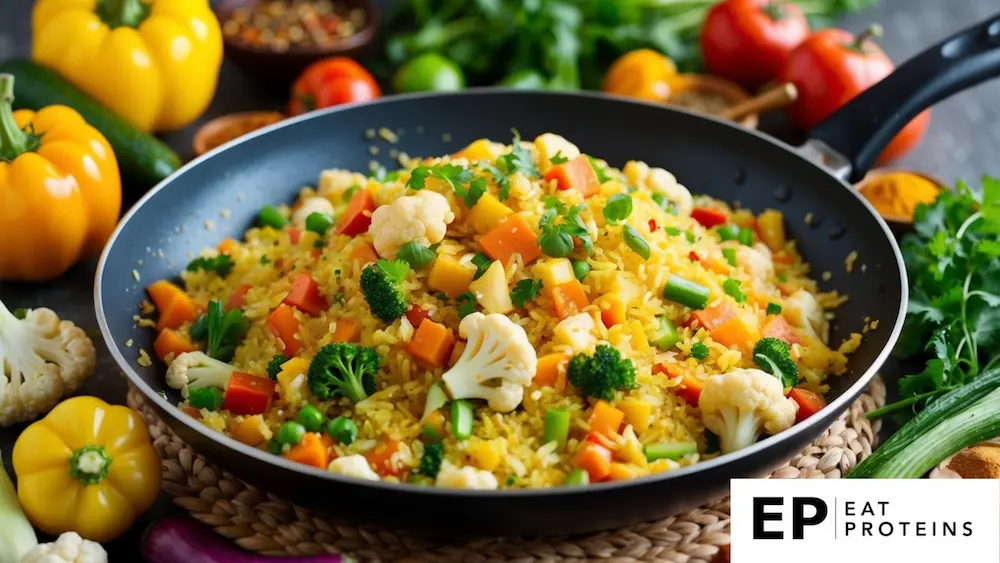
Cauliflower rice stir-fry is a tasty, low-carb meal that’s great for people with diabetes. I love how it’s quick and easy to make, usually taking less than 30 minutes from start to finish.
To make cauliflower rice, I pulse cauliflower florets in a food processor until they resemble rice grains. This creates a healthy base for stir-fries that’s low in carbs and calories.
For the stir-fry, I heat 1 tablespoon of oil in a large pan over medium-high heat. Then I add diced vegetables like bell peppers, carrots, and broccoli, cooking for about 5 minutes until they start to soften.
Next, I add the cauliflower rice and cook for another 3-4 minutes. I season with soy sauce, garlic, and ginger to taste. For protein, I often include diced chicken, tofu, or shrimp, cooking it separately before adding to the stir-fry.
This diabetes-friendly meal is packed with nutrients and fiber. It’s a versatile dish that I can easily customize with different vegetables and proteins to keep things interesting.
6. Greek Yogurt Parfait with Berries
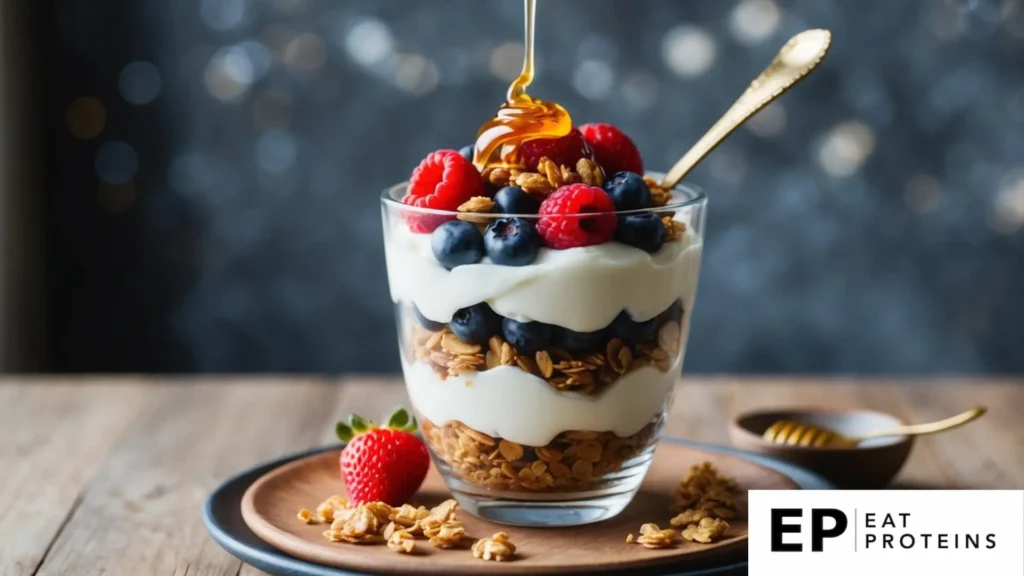
Greek yogurt parfait with berries is a tasty and nutritious option for people with diabetes. It’s quick to prepare and packed with protein and fiber.
I love how easy this recipe is. It takes just 5 minutes to assemble. You’ll need plain Greek yogurt, mixed berries, and a low-sugar granola.
To make it, I layer 1/2 cup Greek yogurt, 1/4 cup mixed berries, and 2 tablespoons granola in a glass. Then I repeat the layers once more.
The Greek yogurt provides protein to help keep blood sugar stable. Fresh berries are low in sugar and high in antioxidants. I choose a granola with less than 5g of sugar per serving.
This parfait has about 250 calories, 20g protein, and 30g carbs. It’s a balanced breakfast or snack for diabetics. The protein and fiber help prevent blood sugar spikes.
7. Baked Cod with Roasted Vegetables
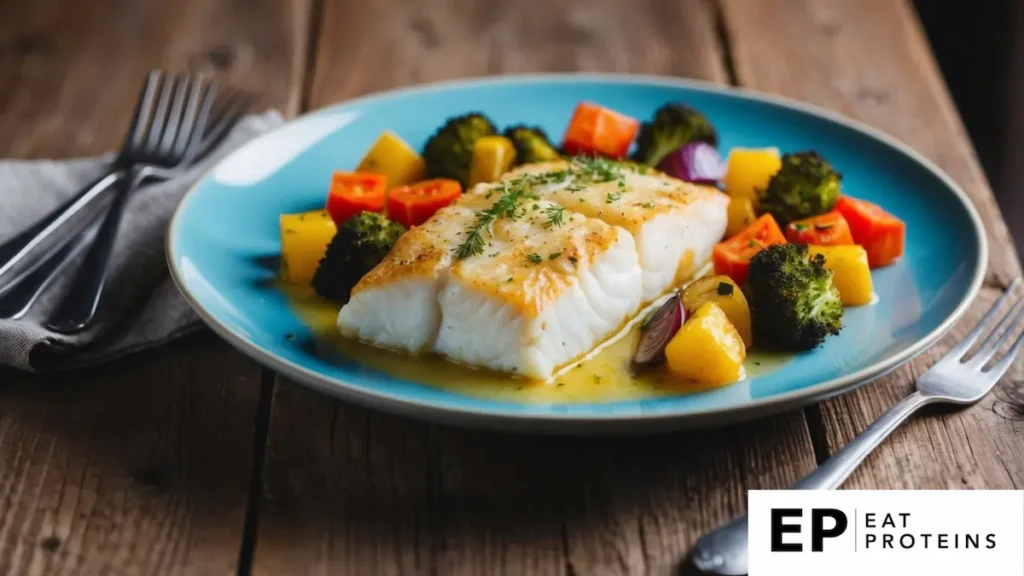
Baked cod with roasted vegetables is a tasty and healthy meal for people with diabetes. It’s simple to make and packed with nutrients.
I start by preheating the oven to 400°F (200°C). Then, I place cod fillets on a baking sheet and season them with salt, pepper, and lemon juice.
Next, I chop my favorite vegetables like bell peppers, zucchini, and carrots. I toss them with olive oil and spread them around the cod on the baking sheet.
I bake everything together for about 15-20 minutes. The cod is done when it flakes easily with a fork, and the vegetables should be tender.
This dish is great because it’s low in carbs and high in protein. The vegetables add fiber and vitamins. I can easily adjust the portion sizes to fit my meal plan.
I like to serve this with a small side of quinoa or brown rice for a complete meal. It’s a quick and easy option for busy weeknights.
8. Spinach and Feta Omelette
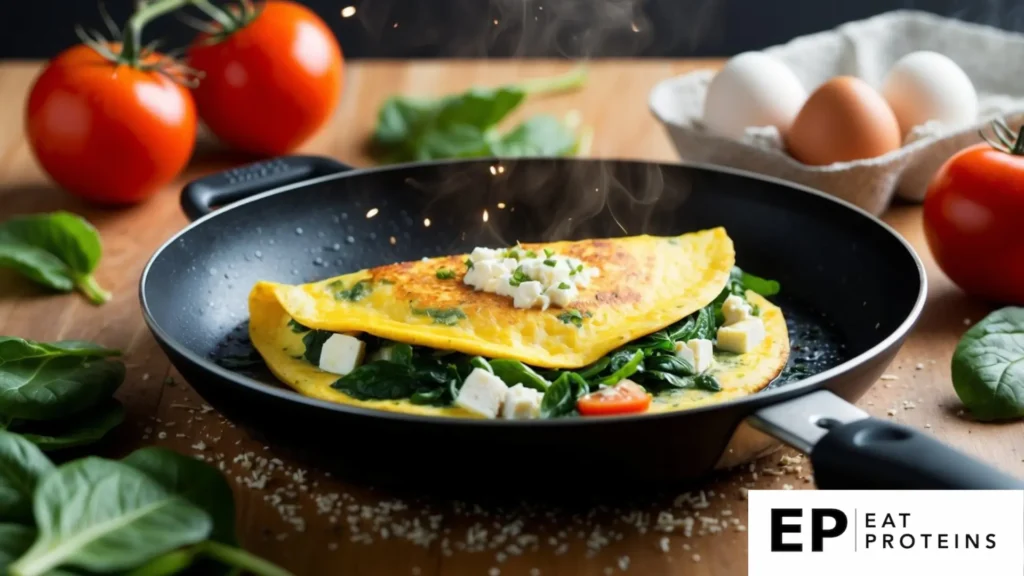
I love this tasty and nutritious breakfast option for people with diabetes. A spinach and feta omelette is easy to make and packed with protein and vegetables.
To prepare, I whisk together 2-3 eggs with a splash of milk. In a non-stick pan, I sauté a handful of fresh spinach until wilted. Then I pour in the egg mixture and let it cook for 2-3 minutes.
Next, I sprinkle 1-2 tablespoons of crumbled feta cheese over half the omelette. Using a spatula, I carefully fold the other half over the cheese. I let it cook for another minute until the cheese starts to melt.
This diabetes-friendly recipe is ready in under 10 minutes. The spinach adds fiber and nutrients, while the feta provides calcium and flavor without too many carbs.
I find this omelette keeps me full and helps manage my blood sugar levels. It’s a great way to start the day or enjoy as a quick lunch or dinner option.
9. Lentil and Vegetable Soup
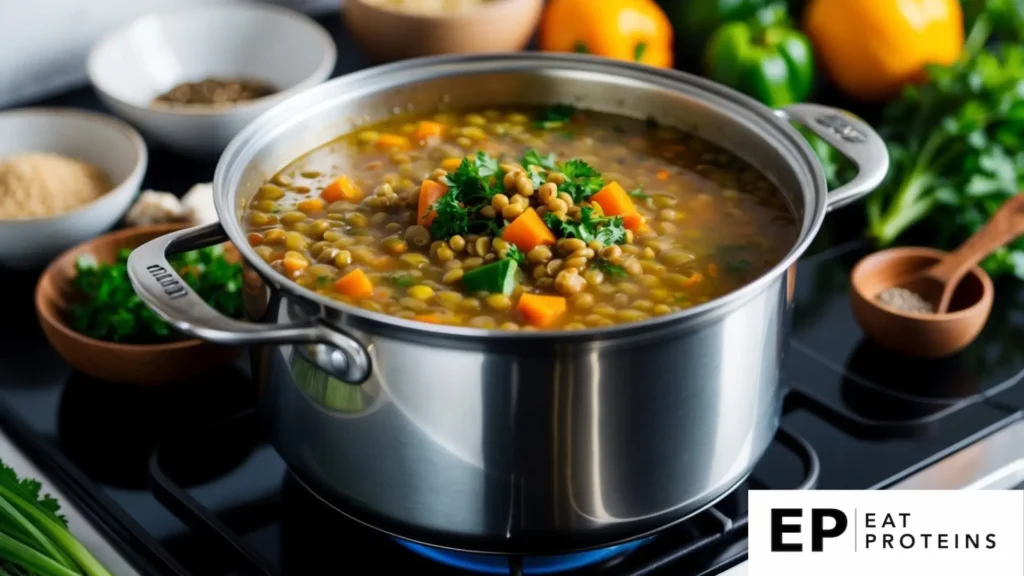
Lentil and vegetable soup is a hearty, nutritious meal that’s great for people with diabetes. I find it easy to make and packed with fiber and protein.
To start, I rinse 1 cup of lentils and chop 2 cups of mixed vegetables like carrots, celery, and onions. I heat 1 tablespoon of oil in a pot and sauté the veggies for 5 minutes.
Next, I add the lentils, 4 cups of low-sodium broth, and spices like garlic and cumin. I bring it to a boil, then simmer for about 20-25 minutes until the lentils are tender.
This soup is versatile and filling. I can add leafy greens like spinach in the last few minutes of cooking for extra nutrients.
One serving provides a good balance of carbs, protein, and fiber, which helps manage blood sugar levels. I can make a big batch and portion it out for easy meals throughout the week.
10. Cucumber and Tomato Salad

Cucumber and tomato salad is a refreshing and healthy option for people with diabetes. It’s low in carbs and calories, making it a great choice for maintaining blood sugar levels.
This salad is incredibly easy to make. I can whip it up in just 10 minutes with a few simple ingredients.
To prepare, I chop 2 medium cucumbers and 2 large tomatoes into bite-sized pieces. I add 1/4 cup of thinly sliced red onion for extra flavor.
In a small bowl, I mix 2 tablespoons of olive oil, 1 tablespoon of lemon juice, and 1 teaspoon of dried oregano. This dressing adds zest without extra sugar.
I toss the vegetables with the dressing in a large bowl. Then I season with salt and pepper to taste. For best results, I let it chill in the fridge for 30 minutes before serving.
This salad is not only diabetes-friendly, but also packed with vitamins and fiber. It’s a perfect side dish or light lunch that I enjoy regularly.
What Is a Diabetic Diet?
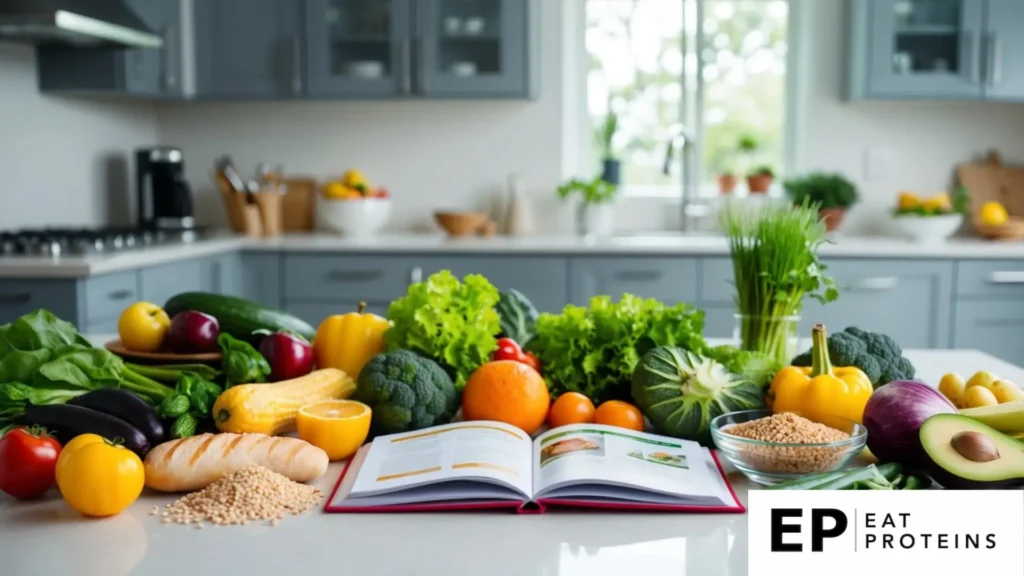
Diabetic diets focus on managing blood sugar levels through careful food choices. These diets help people with diabetes maintain good health and prevent complications.
How Does the Glycemic Index Affect a Diabetic Diet?
The glycemic index (GI) measures how quickly foods raise blood sugar. I recommend choosing low GI foods for better blood sugar control. These include:
- Whole grains
- Legumes
- Non-starchy vegetables
- Some fruits
High GI foods like white bread and sugary snacks can cause rapid blood sugar spikes. I suggest limiting these in a diabetic diet.
Combining low and high GI foods in meals can also help. For example, adding protein to carbs slows digestion and reduces blood sugar impact.
How to Balance Macronutrients in a Diabetic Diet?
A balanced diabetic diet includes the right mix of carbs, proteins, and fats. I advise focusing on:
Carbohydrates: 45-60% of daily calories Proteins: 15-20% of daily calories Fats: 20-35% of daily calories
Carbs have the biggest effect on blood sugar. I recommend spreading carb intake throughout the day to avoid spikes.
Lean proteins help feel full and don’t raise blood sugar. Good sources include:
- Chicken
- Fish
- Tofu
- Legumes
Healthy fats from nuts, seeds, and olive oil can improve insulin sensitivity. I suggest including these in moderation.
What Are Key Ingredients in Diabetic Recipes?
When cooking for diabetes, I focus on ingredients that help manage blood sugar. I choose foods high in fiber and nutrients but low in simple carbs. These ingredients form the foundation of tasty, balanced meals.
What Are the Best Low-Carb Vegetables for a Diabetic Diet?
I love using low-carb veggies in diabetic recipes. Leafy greens like spinach and kale are packed with vitamins and minerals. Broccoli, cauliflower, and Brussels sprouts are great choices too. I also include colorful options like bell peppers, tomatoes, and zucchini.
These veggies are high in fiber, which slows down digestion and helps control blood sugar spikes. I aim for 5-10 servings of vegetables daily in my diabetic meal plans.
For quick meals, I keep pre-cut veggies in the fridge. This makes it easy to throw together a stir-fry or salad. Roasted vegetables are another simple, tasty option I enjoy often.
What High-Fiber Grains Are Suitable for a Diabetic Diet?
I pick whole grains over refined ones for my diabetic recipes. They have more fiber, vitamins, and minerals. Brown rice, quinoa, and oats are some of my go-to choices.
Whole wheat pasta and bread are good in moderation. I make sure to watch portion sizes, as grains can still impact blood sugar. A serving is usually about 1/2 cup of cooked grains.
I like to experiment with less common grains too. Barley, millet, and bulgur add variety to my meals. These grains have a lower glycemic index, which means they cause a slower rise in blood sugar.
